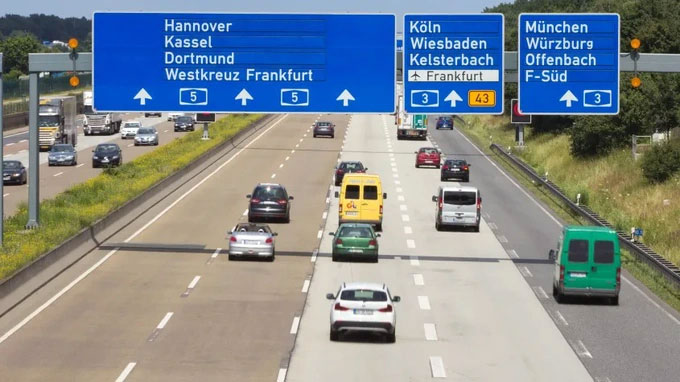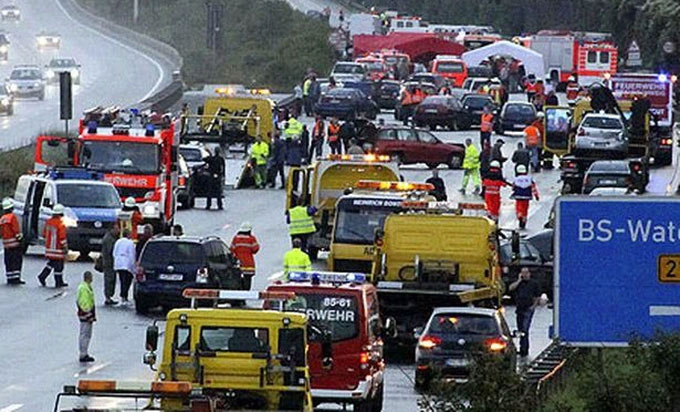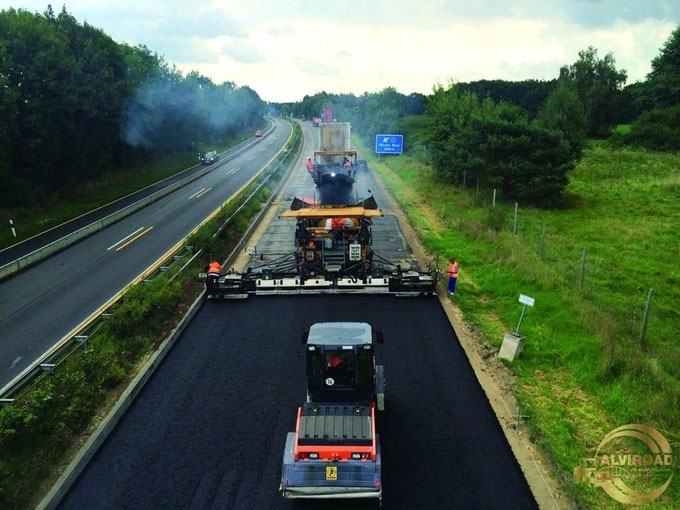When driving on this highway, there are sections where drivers are allowed to accelerate freely without worrying about speed limits.
The Autobahn is one of the largest highway networks in the world. Construction began in 1929, and the route spans nearly 13,000 kilometers, connecting various states across Germany.
Experience driving on the speed-limit-free highway in Germany
What sets this highway apart is the absence of toll booths and certain sections where there are no speed limits.
However, to manage this complex system and reduce traffic accidents, the Autobahn employs modern technology in road construction and enforces strict regulations to ensure driver awareness.
The Only Highway in the World Without Speed Limits
However, this does not apply to the entire highway. Some sections of the Autobahn have speed limits, while others allow drivers to accelerate freely without concern for maximum speed.
In certain areas, such as urban zones and roads with sharp and dangerous turns, drivers are prohibited from exceeding 130 km/h.

Vehicles on the Autobahn highway. (Photo: Auto Express).
Additionally, the speed limit also depends on weather conditions, road surface, and various other factors. The Autobahn sets a minimum speed of 60 km/h. In sections without speed limit signs, drivers can travel at any speed they deem appropriate, but the average speed is typically between 130-160 km/h.
If vehicles exceed 160 km/h, many believe that the risk of accidents increases. However, statistics show that this highway system is very safe, with accident rates significantly lower than those on federal roads in the United States.
Specifically, about 30% of vehicles in Germany travel on the Autobahn, yet only around 10% of total accidents occur on this highway.

A multi-car pile-up involving 259 vehicles on the highway occurred in 2009. (Photo: Mirror).
However, the Autobahn has witnessed a horrific traffic accident that occurred in 2009, which garnered significant public attention both domestically and internationally.
This was a multi-car pile-up involving a total of 259 vehicles, with numerous injuries reported. The cause of the collision was heavy rain that made the road slippery. Subsequently, the highway management had to hire an additional 340 rescue workers to clear the scene, with estimated costs reaching 1.5 million Euros.
A Toll-Free Highway

Experience driving on the speed-limit-free highway in Germany.
Many believe that to maintain the entire highway, the Autobahn would require numerous toll booths. However, the reality is quite the opposite.
It is known that the maintenance costs of the highway are covered by fuel taxes and various other taxes that vehicles pay. To date, the debate over whether to impose tolls on this highway has been contentious but has not yet been enacted into law.
Regular Maintenance and Upkeep
One of the key factors that help reduce traffic accident rates on the Autobahn is continuous maintenance.
Each day, maintenance staff drive specialized vehicles to inspect different areas and address any arising issues. Clear and clean signage and road surfaces facilitate driver observation. In fact, road workers continuously lay new asphalt to keep the Autobahn in perfect condition.

The highway is continuously maintained. (Photo: Cars).
Additionally, vehicles are monitored by a system of thousands of radar units. The collected data provides drivers with information about temperature, road conditions, rainfall, and alerts regarding traffic congestion or accidents.
Along the route, there are continuously operating rest areas and fuel stations. Approximately every 2 kilometers, drivers will encounter an emergency phone station. Furthermore, a system of barriers separates lanes to prevent head-on collisions.


















































